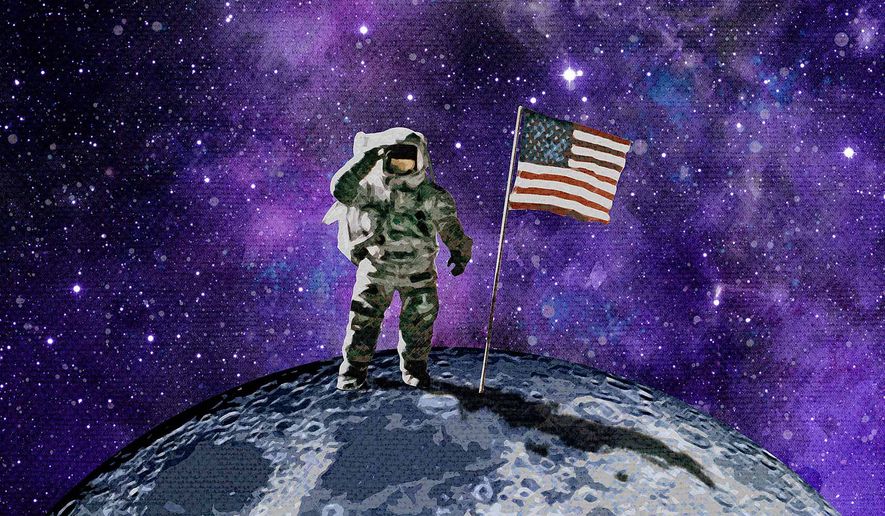OPINION:
Space exploration in the 21st century offers the possibility to reach new frontiers, from developing a lunar gateway for deep space travel, returning American astronauts to the surface of the Moon and eventually putting humans on Mars.
With NASA preparing to return crewed astronaut launches to the United States for the first time since the end of the Space Shuttle program in 2011 and return astronauts to deep space for the first time since the end of the Apollo program in 1972, we are on the cusp of an exciting new era in human spaceflight and exploration.
As we prepare to launch new crewed spacecraft over the next several years, we need to honor the lessons learned from the tragedies of Apollo I, Challenger and Columbia. To successfully reach these next milestones in exploration, it is critical that core safety priorities continue to protect American astronauts and avoid unnecessary risks beyond those inherent to all launches and spaceflight.
I spent much of my career developing and supporting the Apollo program that landed NASA astronauts on the Moon for the first time. The experiences our engineers learned on the first Apollo launches shaped the steps in place today to ensure the safety of the entire team and success of the program.
Apollo 1 would have been the first manned flight, with astronauts Virgil “Gus” Grissom, Ed White and Roger Chafee onboard. That 1967 mission was supposed to be simple — fly the vehicle, fire the Module Engine and return to Earth.
During the second attempt to run the “plugs out test” with 100 percent oxygen in the command module, we held the crew in their position for several hours, trying to improve static filled communications. I was monitoring the test sitting beside the command module when a crew member reported a fire in the vehicle. I took two steps toward the white room when I heard the crew members’ alarm before the space craft erupted. The fire was quickly contained, but not before losing three incredible astronauts.
I was the first launch crew member to enter the spacecraft after removing the crew to try and determine if there was an obvious cause for the fire. After months of investigations by the National Transportation Safety Board (NTSB), one specific cause could not be identified.
Thankfully, we learned from the disaster that day in January. Over the years and subsequent missions, our procedures changed, methods got better and we improved the process to put man in space. NASA human spaceflight programs carefully incorporated these lessons throughout their safety requirements and the talented men and women throughout the agency work hard to make spaceflight as safe as possible for astronauts.
It’s concerning to learn that some of the newer private space ventures launching today don’t appreciate the same safety standards we learned to emphasize on Apollo. Elon Musk’s SpaceX, for example, announced he intends to save time and money by fueling their Falcon 9 rockets after the astronauts board.
This “load and go” process allows SpaceX to inject more fuel without the cost or expertise necessary to build a larger rocket, but it may come at a heavy price. Mr. Musk already lost one unmanned rocket to this risky technique.
I suppose for Mr. Musk, inexperience is replacing the abundant safety protocols drilled into us after witnessing the Apollo 1 disaster. Astronaut safety is NASA’s number one priority on any space mission. There is no reason it should not be for private space travel, but commercial space companies like SpaceX play by different rules.
Most Americans would be surprised to learn that special interests in Washington representing commercial space companies have forbidden the Department of Transportation, which licenses commercial launch and reentry, from developing any human spaceflight safety standards for passengers.
This shortsighted legislative restriction means that billionaires profit and can’t be held accountable for injury or death of their passengers — even though we have decades of lessons learned from NASA to prevent potential incidents.
We owe it to future astronauts to remain diligent with our innovations and not blindly rush while possibly revisiting the mistakes we made decades ago. Congress and the administration should overturn these shortsighted restrictions on commercial spaceflight safety standards, and NASA must ensure that before they put an astronaut on a commercial spacecraft that it lives up to the strict standards we have learned over the last 60 years of spaceflight.
• Richard Hagar worked on every Apollo mission for NASA at the Kennedy Space Center as a spacecraft operator on the launch team, including for the Apollo 11 mission that went to the Moon. He lives in Tennessee.




Please read our comment policy before commenting.